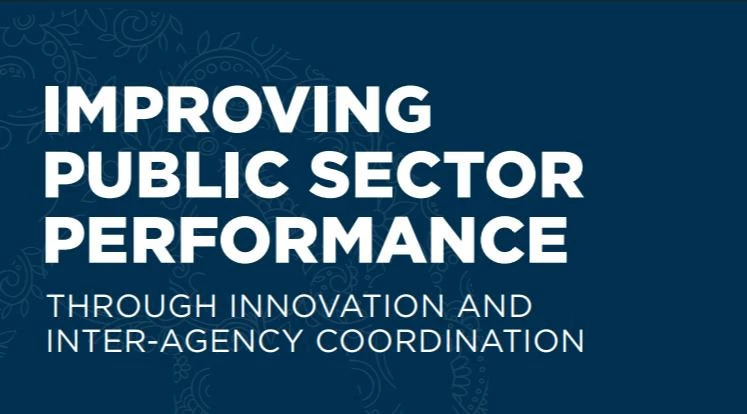Almost daily, headlines in the world’s leading newspapers are full of examples of public sector failures: public money is mismanaged or outright misused; civil servants are not motivated or are poorly trained; government agencies fail to coordinate with each other; and as a result, citizens are either deprived of quality public services, or must go through a bureaucratic maze to access them.
These public-sector challenges are often present even in the world’s most developed countries. They are of course further exacerbated by lower levels of development.
So what hope do low and middle-income countries have to make their public sectors function more effectively? Is this just a futile enterprise altogether?
We believe it is not. Our new Global Report, Improving Public Sector Performance Through Innovation and Inter-Agency Coordination, argues that positive change is possible in many low and middle-income countries. The report collects 15 inspiring country cases of such reforms and shows that such change does not necessarily require huge financial investment or complex IT systems. What seems to be required, instead, are five interconnected drivers of success:
- Political leadership is needed because few, if any, of the innovations are a purely technocratic exercise. Leaders need to find ways to collaborate with a wide range of internal and external stakeholders to overcome inherent opposition.
- Institutional capacity building of existing bodies is a common element across many of the 15 cases. For reforms to endure, one ultimately needs to create sustainable institutions.
- Incentives matter, both at the institutional level (e.g., through government-wide policy, creating systems and structures that shape institutional objectives, and program monitoring systems) as well as at the level of civil servants (e.g., through performance targets and reward systems).
- Increased transparency can help deliver change in public sector performance by breaking down government silos and ensuring inter-agency information-sharing, and publishing or disseminating performance information. Transparency can also be a powerful driver for changing incentives.
- Technology, while not a panacea, is present in two-thirds of the featured cases. The reformers applied relevant, even basic, IT tools and know-how to their specific functional requirements and did not over-design their efforts. Furthermore, the technology application is rarely a stand-alone solution; rather, it is accompanied by policies and procedures to change behavior.
- Rwanda’s leadership, for example, incentivized local governments to improve their performance by fusing the traditional leaders’ public pledge (known as imihigo) with a modern idea of performance contracts for high-level civil servants. The President’s Office began by using these powerful non-monetary incentives to get mayors across the country to set development targets for their districts and deliver on them, resulting in measurably better development outcomes at the district level.
- In Pakistan, a simple mobile text messaging system and robocalls are used to create a powerful feedback mechanism, through which citizens provide information to their leaders about the quality and availability of public services in real time. After piloting this intervention in the province of Punjab, the national passport office has since taken the approach on board and attributes citizen feedback to helping them slash the processing time for passports from three weeks to ten days.
- Another example is Indonesia, where a simple automation of the entrance exam for civil servants cut corruption and nepotism in civil service recruitment. Now the database of questions is tightly controlled, and the results are posted in real time outside the testing center, dramatically reducing opportunities for preferential hiring.
All these ideas are encapsulated in the well-known Chinese saying, “crossing the river by feeling the stones.” This means that each experiment that worked for some governments can be considered a stepping stone for others, but it needs to be tried out, and possibly adjusted to the specific context at hand. Documenting such experiences thus becomes important as an inspiration or catalyst for further trying and adapting, rather than as a prescription for an approach that can be directly emulated.
The report also shines a spotlight on a key public-sector performance topic: policy and inter-agency coordination.
In today’s world, governments and the public sector are facing increasing pressures to perform at a higher level than ever before. While this report does not provide all the answers to public sector performance challenges, it analyzes innovations that have worked and identifies key factors that have contributed to their success. However, the overarching element of success is strong coordination to ensure that governments and their ministries, departments, and agencies are no longer operating at cross-purposes.
Through coordination, performance can be boosted, and through innovation and experimentation one can get a glimpse of the other side of the river and ideally the direction of the next stone.
The report will be launched on October 29, 2018, at the World Bank headquarters in Washington, DC. It is available for download here.
Suggested Tweets:
- New @WorldBank report about improving public sector performance! Read more here
- Strong inter-agency and govt coordination is key to improve public sector performance according to new @WorldBank report
- New @WorldBank report shows how countries like #Rwanda #Pakistan and #Indonesia improved public sector performance



Join the Conversation